Progress at the National Butterfly Center, 2016
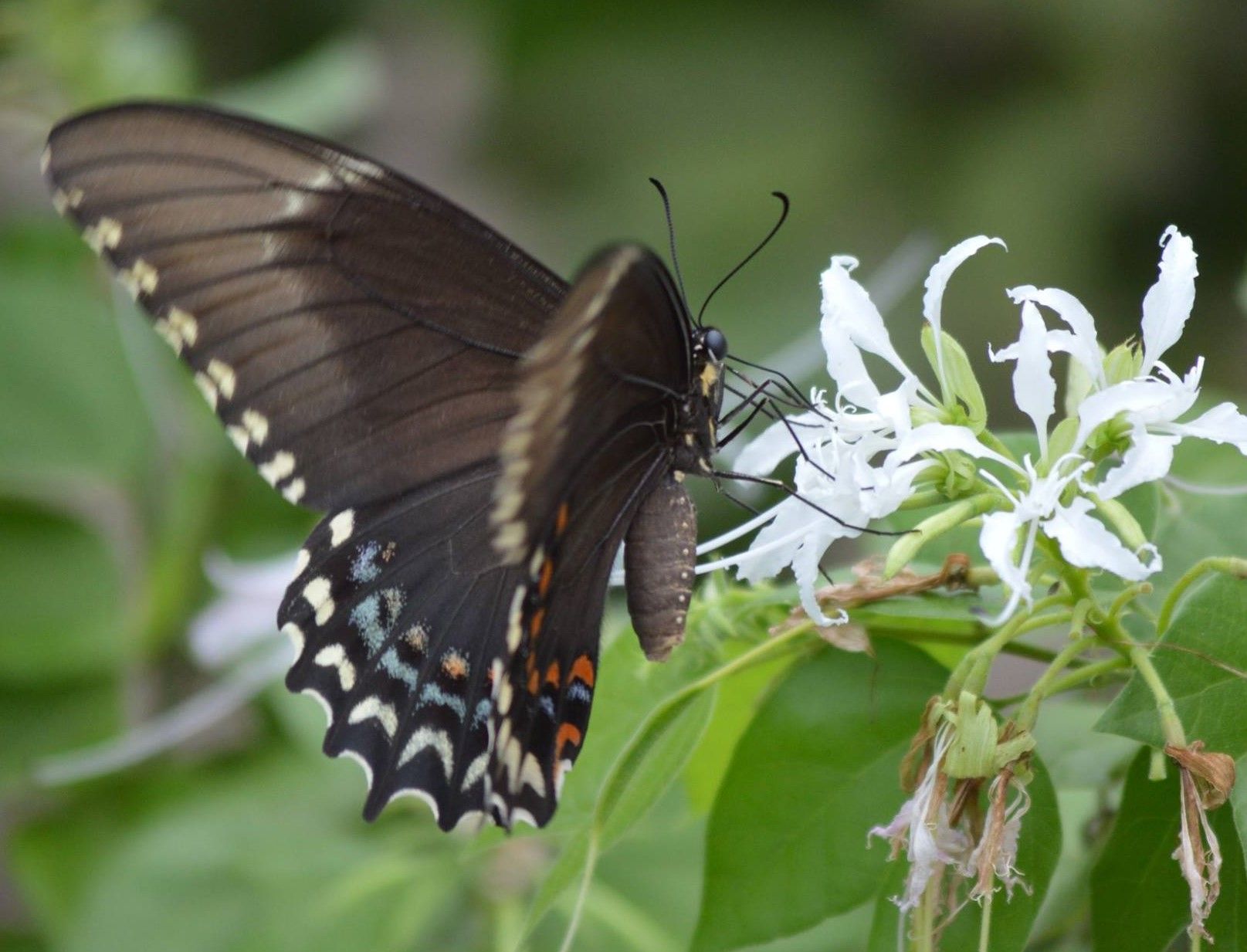 I’ve never seen so many Mexican Bluewings!
I’ve never seen so many Mexican Bluewings!
This iconic species—the emblem of the National Butterfly Center—has erupted in unprecedented numbers, this year. We interpret this phenomenon to be a good sign, both an omen of abundance and affirmation of our work.
We’re often reminded that our gardens are one great, big experiment. For this reason, our fortunes are not assured. With regard to butterfly gardening, the formula is supposed to be pretty simple: Plant the appropriate hosts and nectar, and they will come; but this wholesale habitat restoration and enrichment project is a bit trickier. What to plant where and why? Can we buy it or go find it growing wild? If we get it will it cooperate with our soil, tolerate our water? What about our pairings and predation? After all, we want our eggs, caterpillars and butterflies to have strong odds against all the wasps, beetles, frogs, birds and other wildlife that find suitable breeding and feeding areas in our plantings. Sometimes we succeed and sometimes we fail. Still, the bluewings seem to be celebrating a victory of sorts; so I’ll gladly take getting hit in the face by one as a ‘high five’ for a job well done!
We’ve also seen a record number of school children this year. Thanks to a special arrangement with Mission Consolidated Independent School District, we were able to receive every third and fifth grader for traditional field education. This kept us exceedingly busy and pushed us to create curriculum materials and valuable study guides for repeated use. Some of our lesson plans and supplemental materials are available online through a password protected portal for teachers, while others like Tracks & Scat or Simple Spider Identification, are available to visitors based upon their special interests.
Remarkable things are happening here, as we continue to grow. While our focus is—and always will be—increasing appreciation for and understanding of butterflies, the National Butterfly Center is home to so much more! For example, endangered Texas Tortoises have moved into the Butterfly Conservatory & Mary A. Yturria Outdoor Classroom. We remind everyone who enters to be careful where they step because all the wildlife inside is free to come and go, just like the butterflies, hummingbirds and rabbits one may encounter there. In addition, our population of protected Indigo snakes is growing. These non-venomous beauties patrol the gardens and prey on rattlesnakes and rats. Finally, our bird list is a bit longer, thanks to roaming Wild Turkeys, an American Woodcock, and a Purple Gallinule found wading in the Visitor’s Pavilion pond. Two Yellow-green Vireos were quite an attraction in July.
Most butterfliers probably think that October-November is the best time to visit the National Butterfly Center, and it’s hard to argue with that. However, other times of the year are often fantastic as well! July 2016 produced a long list of butterfly species that are unusual, even for the NBC. For example, a spectacular bloom of Rosita Patches caused quite a stir and kept visiting butterfliers energized for weeks. Other cool species this seen this past July, that most people have never seen, included Ornythion Swallowtail, Clench’s Greenstreak, White Scrub-Hairstreak, Erato Heliconian, Banded Peacock, Band-celled Sister, Spot-celled Sister, Blue-eyed Sailor, Many-banded Daggerwing, Silver Emperor, and East-Mexican White-Skipper. Who knows what will show up next July!
Also in July, we held our 3rd Annual Critter Camp. A small but passionate group of children look forward to this event and the hands-on experiential learning that occurs each day, thanks to interaction with live animals and in-depth examination of their biology, behavior and benefit to the environment. While Max has always been our “critter wrangler” extraordinaire, Angie will soon become the Rio Grande Valley’s only licensed wildlife rehabilitator, bringing additional renown to the National Butterfly Center. News of this was a complete surprise to me, as she pursued certification on her own for the good of the center. Who knew this former Licensed Vocational Nurse and Brazilian jui-jitsu fighter had such a soft spot for abandoned and injured animals?
Rolling with the Punches
Everyone knows you can’t have the good without the bad and indeed, we’ve had a few challenges, too. The untimely passing of our trusty tractor, ‘Rosie’ Mahindra, brought the heavy duty grounds work to a grinding halt. Bright red when purchased, years of chronic sun exposure caused this workhorse to fade to pink; that’s why we named her Rosie. We also found that sweet talkin’ the ol’ gal sometimes helped with her temperamental fits and made it a little easier for us to cope with her unreliability. Near the end, Ricky confessed that in spite of his myriad mechanical skills there was nothing he could do for her.
If you receive our e-newsletter, NECTAR, or follow us on Facebook, you may have seen the announcement of Rosie’s death and the subsequent establishment of a memorial fund to provide for her replacement. Many, many of you have made generous contributions toward our $30,000 goal for a new tractor and all the implements needed to accomplish shredding, plowing, hauling and planting as we fulfill our grant responsibilities and long-term vision plans for the 100-acre property. As of publication, we’re still about $5000 short of the monies needed to replace Rosie; so donations are welcome!
Memorial Day brought more bad in the form of a microburst event. None of us had ever heard of this type of dangerous weather system or experienced anything like it before. We had no words to describe the devastation that occurred to the Hackberry Trail other than “tornado.” As we walked the grounds surveying the situation, the National Weather Service confirmed a severe thunderstorm in south Mission precipitated this destructive event, wherein an exceptionally-intense column of sinking air produces a violent downdraft reaching 75-85 miles per hour. The wind was so powerful the steel frame of our nursery was bent and the whole structure leaned at a sixty-degree angle; however, the affected area was localized, with impact most obvious at Chimney Park, the National Butterfly Center and Anzalduas Park, which remains closed.
If you plan to attend the Biennial Members’ Meeting (combined with the 21st Annual Texas Butterfly Festival) this October, you will see for yourself how this endangered, riverine woodland was altered by the loss of dozens of mature trees. Now, we wait. The increased sunlight will bring forth seedlings and fuel the growth of saplings. Volunteers, like lantana, crucita and Turk’s Cap, that currently pepper the trail will also spread with more sunshine to the understory, and this is all good news for the butterflies.
Show & Tell
Your presence at the NABA Biennial Member’s Meeting, starting on Saturday, October 29, is greatly desired! We can’t wait to share your special place with you, as well as future plans for this truly unique project of the North American Butterfly Association. Furthermore, we guarantee this meeting will be unlike any other. We’re planning to knock your socks off with two nights of dining al fresco, featuring flavorful, signature dishes prepared on site by the award-winning members of the Rio Grande Valley Chapter of the Texas Chefs’ Association; the premier musical stylings of the beautiful and talented Mariachi Mariposa; and field trips to hot spots and secret gardens scheduled to open exclusively for your enjoyment. The camaraderie and the incredible diversity make this a do-not-miss occasion at the mothership location, for everyone interested in advancing our mission.
One of the best ways to help people connect with wildlife and promote conservation is through a camera lens, so remember to enter your photos in the North American Butterfly Photo Contest, for a chance to win $500. Complete rules may be found at www.TexasButterflyFestival.com, where the portal will open for submissions September 1 – 30. The images generated by this contest provide powerful tools for exposing people to the tremendous variety of wild butterflies and giving them an intimate view butterfly lives; thereby engaging the public in critical conversations concerning disappearing habitat, the effects of chemical pollutants, the importance of pollinators, climate change and more.
Demonstrating the effects of native plants, flowing water, feeding stations and such are fundamental to ensuring understanding. Thanks to a generous donation from a member-donor, we installed a stream and landscaping outside the rear of the Visitor’s Pavilion to the Hackberry Trail, and a bird blind that seats four. Painted Buntings, Blue Grosbeak and Bobwhite Quail come to bathe in the shallows, while skippers galore nectar on the Texas Babybonnets at the water’s edge. This project, as well as the first two loops of walking trails in the TEXSTAR acreage, were brought to fruition by young men achieving the rank of Eagle Scout. We’re honored to work beside these young citizen-conservationists who value the Earth and cherish her riches.
Man Plans, God Laughs
This Yiddish proverb sustains me, not only in my current position but in general. It doesn’t seem to matter what we dream up, plot or undertake, Creation is certain to respond. This year (and next) we’re working with US Fish & Wildlife Service and others to increase the seedbank for native milkweeds and propagate almost 10,000 specimens in plant bands for starting the Southernmost Monarch Waystation. It’s a massive job and, man, are these Asclepias oenortheroides finicky?! There are reasons the hierba de zizotes (as it is commonly called in Spanish) has never been successfully introduced to the commercial marketplace—and we’re learning all of them the hard way…
Whether the zizotes cooperate or not, this initiative will yield new butterfly gardens and greater habitat distribution as the result of our community outreach. More than 100 Girl Scouts participated in our M3: Monarchs, Milkweed & Me program last fall, and received their National Butterfly Center fun patch. Our goal is for this to become a proprietary butterfly conservation badge in partnership with Girls Scouts of the USA.
In addition to hosting educational events for landowners, farmers and ranchers to learn about government grant and cost-share opportunities available to them for planting pollinator habitat, we are directly impacting the landscape by establishing and enhancing demonstration gardens at important places like the University of Texas-RGV, in Edinburg. Here, Max was instrumental in redesigning the Veteran’s Wildscape Garden on campus, so students and visitors may become familiar with native plants and enjoy the beauty and bounty they bring. As this article is headed to press, naturalists are celebrating the verified appearance of a rare county migrant, the Hooded Warbler, at this very special location.
The past year also saw the return of Art in the Park, a juried competition of original works inspired by observations at the National Butterfly Center. Members of the Upper Valley Art League created one-of-a-kind textiles, sculptures, paintings and prints to recognize and reflect the remarkable, natural wonders that may be found here.
In drought or deluge, these wonders will only increase with each planting and every project intended to restore diversity and depth to your 100-acre parcel of paradise. For this reason, alone, we plan and laugh—and invite you to join along.



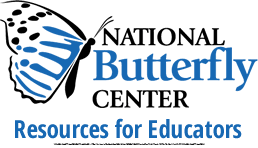



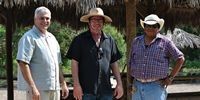
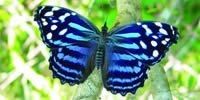
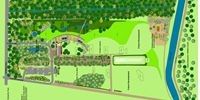
 Media
Media